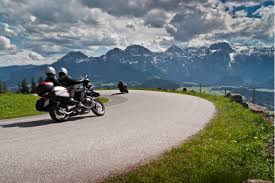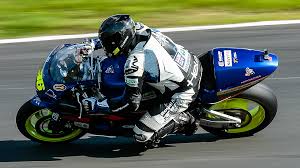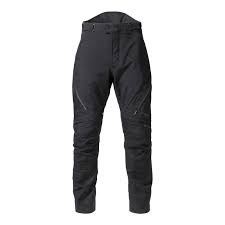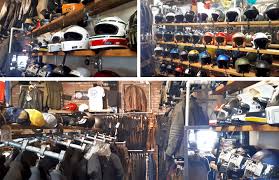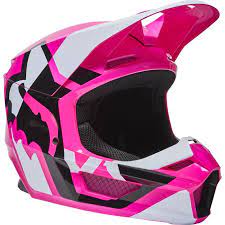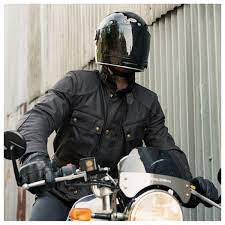
Belstaff Motorcycle Clothing: Combining Style and Functionality
When it comes to motorcycle clothing, few brands can match the reputation and heritage of Belstaff. With a history dating back to 1924, Belstaff has been synonymous with quality, durability, and style in the world of motorcycling.
Belstaff understands that riders need more than just protection; they also want to look good while riding. That’s why their range of motorcycle clothing seamlessly blends style and functionality, allowing riders to feel confident and comfortable on their bikes.
One of the standout features of Belstaff motorcycle clothing is its commitment to using high-quality materials. From premium leather jackets to robust textile suits, every piece is crafted with attention to detail and designed to withstand the rigors of the road. This ensures that riders can rely on their Belstaff gear for years to come.
Protection is paramount when it comes to motorcycle apparel, and Belstaff takes this seriously. Their clothing incorporates advanced safety features such as impact-resistant armor in key areas like shoulders, elbows, and knees. These protective elements are seamlessly integrated into the design without compromising on style or comfort.
Belstaff’s dedication to functionality is evident in their innovative designs. They understand that riders require flexibility and freedom of movement while on their bikes. Therefore, their garments are tailored with articulated joints and stretch panels strategically placed for optimal comfort and mobility.
Weather conditions can change rapidly during a ride, so Belstaff ensures that their clothing is adaptable. Many of their jackets come equipped with removable thermal liners or waterproof membranes, allowing riders to customize their gear based on the weather conditions they may encounter.
Beyond functionality, Belstaff’s timeless designs have made them a favorite among motorcycle enthusiasts worldwide. Their jackets exude a classic yet contemporary aesthetic that effortlessly transitions from the road to everyday wear. Whether you prefer a vintage-inspired leather jacket or a modern textile suit, there’s something for every rider’s taste within the Belstaff range.
Belstaff’s commitment to quality and style extends beyond their clothing. They also offer a range of accessories such as gloves, boots, and helmets that complement their apparel perfectly. These accessories are crafted with the same attention to detail and commitment to excellence, ensuring that riders can complete their ensemble with confidence.
In conclusion, Belstaff motorcycle clothing is a perfect blend of style and functionality. With their rich heritage, commitment to quality materials, innovative designs, and dedication to rider safety, Belstaff has become a trusted name in the world of motorcycling. Whether you’re a seasoned rider or just starting your journey on two wheels, investing in Belstaff gear will provide you with the confidence and comfort you need for every ride. So gear up with Belstaff and hit the road in style!
Essential Tips for Belstaff Motorcycle Clothing: Emphasizing Quality, Safety, Weatherproofing, Fit, Comfort, Style, and Versatility
- Quality and Durability
- Safety Features
- Weatherproofing
- Fit and Comfort
- Style and Versatility
Quality and Durability
When it comes to choosing motorcycle clothing, quality and durability are paramount. That’s why Belstaff motorcycle clothing stands out from the crowd. With a rich heritage dating back to 1924, Belstaff has established itself as a brand that riders can trust.
Belstaff understands that riders need gear that can withstand the demands of the road. That’s why they prioritize quality in every aspect of their clothing. From the selection of premium materials to the meticulous craftsmanship, Belstaff ensures that their garments are built to last.
Their jackets, for example, are made from top-quality leather or robust textiles, known for their strength and resilience. These materials not only provide excellent protection against abrasions but also age beautifully, developing a unique patina over time.
Durability is further enhanced by the attention to detail in the construction of Belstaff clothing. Reinforced stitching and high-quality hardware ensure that seams stay strong and zippers remain reliable even after countless rides. This level of craftsmanship guarantees that your Belstaff gear will be able to withstand the rigors of your adventures for years to come.
Investing in high-quality and durable motorcycle clothing is not just about longevity; it’s also about safety. When you’re on your bike, you want gear that you can rely on. Belstaff’s commitment to quality means that you can have peace of mind knowing that your clothing will provide the necessary protection in case of an accident or impact.
Moreover, quality and durability go hand in hand with comfort. Belstaff understands that riders need gear they can wear comfortably for long rides. Their attention to detail extends to creating ergonomic designs with features like adjustable closures and ventilation options, ensuring optimal comfort regardless of weather conditions.
In conclusion, when it comes to motorcycle clothing, quality and durability should be at the top of your priority list. Choosing Belstaff means investing in gear that is built to last, providing both protection and comfort on every ride. So whether you’re a seasoned rider or just starting out, trust in Belstaff’s commitment to quality and durability for an exceptional riding experience.
Safety Features
When it comes to choosing motorcycle clothing, safety should always be a top priority. With Belstaff motorcycle clothing, you can ride with confidence knowing that their gear is equipped with advanced safety features.
Belstaff understands the importance of protecting riders from potential hazards on the road. That’s why their clothing incorporates impact-resistant armor in key areas such as shoulders, elbows, and knees. This armor provides an extra layer of protection in case of an accident or fall, minimizing the risk of injuries.
In addition to armor, Belstaff garments are designed with abrasion-resistant materials. Whether it’s their premium leather jackets or durable textile suits, these fabrics are specifically chosen for their ability to withstand friction and protect against road rash.
Belstaff also pays attention to visibility on the road. Many of their jackets feature reflective panels or piping, ensuring that riders remain visible even in low-light conditions. This enhances safety by making it easier for other motorists to spot you on the road.
Another important safety feature found in Belstaff motorcycle clothing is its ergonomic design. The garments are tailored with articulated joints and stretch panels strategically placed for optimal comfort and freedom of movement. This allows riders to maintain control and maneuverability while riding, reducing the risk of accidents caused by restricted mobility.
Belstaff’s commitment to safety doesn’t stop at clothing; they also offer a range of accessories designed with rider protection in mind. From sturdy gloves that provide grip and impact resistance to boots that offer ankle support and reinforced soles, every accessory is crafted with your safety on the road in mind.
In conclusion, when it comes to motorcycle clothing, Belstaff goes above and beyond in prioritizing rider safety. Their gear is equipped with advanced features such as impact-resistant armor, abrasion-resistant materials, high-visibility elements, and ergonomic designs. By choosing Belstaff motorcycle clothing, you can ride confidently knowing that you have taken every precaution to protect yourself on the road. Stay safe and stylish with Belstaff!
Weatherproofing
When it comes to riding motorcycles, unpredictable weather can be a challenge. That’s why having weatherproof motorcycle clothing is essential, and Belstaff understands this better than anyone. With their commitment to quality and functionality, Belstaff offers a range of weatherproof motorcycle clothing that keeps riders protected from the elements.
Belstaff’s weatherproof jackets are designed to withstand rain, wind, and even snow. These jackets feature advanced waterproof membranes that keep water out while allowing moisture to escape, keeping riders dry and comfortable. Whether you’re facing a light drizzle or a heavy downpour, Belstaff’s weatherproof jackets have got you covered.
In addition to being waterproof, Belstaff’s weatherproof clothing is also wind-resistant. Riding at high speeds can create strong gusts of wind that can make the ride uncomfortable and chilly. However, with Belstaff’s wind-resistant materials and smart design features like adjustable cuffs and collars, riders can stay protected from the biting wind while maintaining optimal comfort.
Belstaff also understands the importance of breathability in weatherproof gear. Sweating inside your jacket can be uncomfortable and lead to dampness. That’s why their weatherproof garments incorporate breathable fabrics that allow air circulation, preventing overheating and ensuring a comfortable ride even in warmer conditions.
Another great feature of Belstaff’s weatherproof clothing is its versatility. Many of their jackets come with removable liners or layers that allow riders to adapt to changing weather conditions. Whether it’s removing the thermal liner on a warmer day or adding an extra layer for colder rides, these versatile options make Belstaff gear suitable for all seasons.
With Belstaff’s commitment to both style and functionality, their weatherproof motorcycle clothing doesn’t compromise on aesthetics either. Their jackets come in various designs and styles that cater to different tastes without sacrificing performance or protection. Riders can confidently hit the road knowing they look good while staying safe from the elements.
In conclusion, investing in Belstaff weatherproof motorcycle clothing is a wise choice for riders who want to stay protected and comfortable in any weather condition. With their advanced waterproofing, wind resistance, breathability, and versatile design features, Belstaff ensures that riders can enjoy their journey without worrying about the elements. So gear up with Belstaff and ride with confidence, knowing you’re prepared for whatever Mother Nature throws your way.
Fit and Comfort
Fit and Comfort: The Key to Enjoying Belstaff Motorcycle Clothing
When it comes to motorcycle clothing, fit and comfort are paramount. And with Belstaff motorcycle gear, you can expect nothing less than a perfect blend of style, functionality, and most importantly, a comfortable fit.
Belstaff understands that riders need to feel at ease in their gear to fully enjoy their riding experience. That’s why they prioritize the fit and comfort of their clothing, ensuring that every piece is designed to provide maximum comfort without compromising on style or safety.
One of the reasons why Belstaff is highly regarded in the motorcycle community is their attention to detail when it comes to sizing. They offer a wide range of sizes, catering to different body types and ensuring that riders can find the perfect fit. Whether you’re petite or tall, slim or muscular, Belstaff has options that will suit your unique physique.
But it’s not just about finding the right size; it’s also about how the clothing feels when you wear it. Belstaff takes great care in crafting garments that are comfortable against the skin. From soft linings to strategically placed padding, every element is carefully considered to provide a comfortable wearing experience.
Another aspect that contributes to the comfort of Belstaff motorcycle clothing is its ergonomic design. The garments are tailored with articulated joints and stretch panels in all the right places, allowing for freedom of movement while riding. This ensures that you can maneuver your bike with ease without feeling restricted by your gear.
Belstaff also pays attention to ventilation in their designs. Riding can be physically demanding, especially during hot weather conditions. That’s why many of their jackets feature ventilation panels or zippered vents that allow air circulation, keeping you cool and comfortable even during long rides.
Comfort extends beyond just jackets; Belstaff also considers it in their pants and suits as well. With features like adjustable waistbands and stretch inserts, they ensure a snug yet flexible fit for riders. This attention to detail means that you can focus on the road ahead, knowing that your gear is working with you, not against you.
In conclusion, fit and comfort are crucial aspects of enjoying your riding experience, and Belstaff motorcycle clothing excels in both areas. With their extensive size range, meticulous attention to detail in design, and focus on rider comfort, Belstaff ensures that every rider can find gear that fits them perfectly and allows them to ride with confidence and ease. So gear up with Belstaff and experience the joy of riding in comfortable and stylish motorcycle clothing!
Style and Versatility
When it comes to motorcycle clothing, style and versatility are key factors that riders consider. And when it comes to finding the perfect balance between the two, Belstaff motorcycle clothing stands out.
Belstaff understands that riders want to look good both on and off their bikes. That’s why their clothing is designed with a stylish aesthetic that seamlessly transitions from the road to everyday wear. Whether you’re cruising down the highway or meeting friends for a coffee, you can trust that your Belstaff gear will make a statement.
But style isn’t the only thing that matters. Versatility is equally important, as riders often face various weather conditions during their journeys. Belstaff addresses this by offering clothing options that can adapt to changing climates. Many of their jackets feature removable liners or waterproof membranes, allowing riders to customize their gear based on the weather they encounter.
This versatility extends beyond just weather protection. Belstaff garments are designed with practical features in mind, such as multiple pockets for storage or adjustable cuffs and waistbands for a personalized fit. These thoughtful details enhance functionality without compromising on style.
Whether you’re a seasoned rider or new to motorcycling, investing in Belstaff motorcycle clothing ensures that you’ll have gear that not only looks great but also performs exceptionally well. So why settle for anything less? Choose Belstaff and experience the perfect blend of style and versatility for your next ride.


